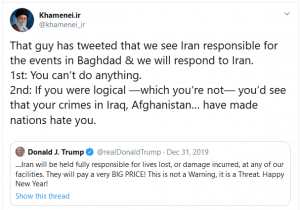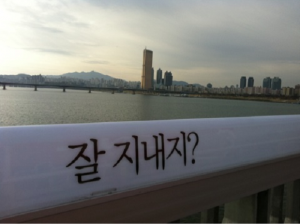Пришла мысль: Технологии развиваются быстрее, чем мы можем себе представить, но медленнее чем мы того хотим.
 А новый Дум как признак стабильности в мире. В то время как миллионы людей оказались на вынужденном карантине, его релиз пришелся как нельзя кстати. DOOM Eternal является прямым продолжением вышедшего в 2016 году популярного шутера DOOM, в котором вас ждет новое противостояние Палача Рока и сил Ада.
А новый Дум как признак стабильности в мире. В то время как миллионы людей оказались на вынужденном карантине, его релиз пришелся как нельзя кстати. DOOM Eternal является прямым продолжением вышедшего в 2016 году популярного шутера DOOM, в котором вас ждет новое противостояние Палача Рока и сил Ада.
Поэтому берите в руки мощное оружие и отправляйтесь по измерениям уничтожать как новых, так и хорошо знакомых по прошлым частям демонических монстров.
А тем временем пользователи Reddit обратили внимание, что разработчики опубликовали в лаунчере Bethesda exe-файл игры DOOM Eternal без защиты Denuvo — он весил всего 67 Мб вместо 369 Мб. В итоге пиратам даже не пришлось ничего взламывать и игра доступна для скачивания.
А через день был готов уже и Trainer (1.07).
Num 1 – Infinite Health
Num 2 – Infinite Shield
Num 3 – Infinite Rune Energy
Num 4 – Infinite Ammo
Num 5 – Grenades No Cooldown
Num 6 – Rapid Fire
Num 7 – Super Speed
Num 8 – Slow Motion
Num 9 – Infinite Jumps
Num 0 – One Hit Kill
Num + – Infinite Dash
Num – – Infinite Blood Punch
Ctrl+Num 1 – Infinite Extra Lives
Ctrl+Num 2 – Edit Weapon Points
Ctrl+Num 3 – Edit Mastery Tokens
Ctrl+Num 4 – Edit Praetor Suit Points
Ctrl+Num 5 – Edit Sentinel Batteries
Йесод и все все все обращает внимание: На фоне общего кризиса гейм-индустрии, новый «Дум» образчик того как можно пятый раз бахнуть снаряд из РПГ (BFG, извините) в одну воронку и это будет красиво. Старейшей франшизе больше лет, чем большинству ее игроков — первая часть вышла в 1993 году — а она живее всех живых и берет высоту за высотой с шотганом наперевес.
Графика — отменная. Разнообразие оружия, апгрейдов к нему, скиллов и монстров — высокое. Однако, важнее всего сюжет(да, он наконец появился). Есть вещи крайне вредные в реальной жизни, но обладающие огромным творческим потенциалом: мачизм, мистика, ксенофобия и конспирологическое мышление. Именно они превращают «Дум» в яркую звезду Полынь на фоне импотентских миллениал-хитов.
Ранее безымянный космодесантник получает довольно детально прописанную биографию. Для тех кто не разобрался: во всех «Думах» герой один и тот же. Это мускулистый шатен-европеоид с грубыми чертами лица, живое воплощение ярости и ненависти, помешанный на униформе, оружии и борьбе с «исчадиями Ада». Любимое оружие — дробовик. В «Вечности» мы узнаем, что между 3 и 4 частью игры он, находясь в аду, провалился сквозь время и пространство.
Тысячи лет назад Думгай оказался на планете гуманоидов аргента и после долгого и кровавого пути стал одним из Ночных Стражей(местные джедаи), чтобы, после грандиозного предательства, проиграть финальный бой чертям из Ада и быть замороженным на века. В наше время он пробуждается Палачом Рока — сверхчеловеком наделенным невероятной силой и защитой с помощью древних технологий и участия Серафима(члена еще одной инопланетной расы «ангелов»-Творцов).

так выглядит актер озвучки
В игре мы на краткий момент видимо не только его лицо сквозь щиток шлема, но и слышим голос, а также видим флэшбеки и читаем отрывки истории, позволяющие собрать пазл сюжета воедино…
Представьте себе, идет 2020 год, а на выкатывают боевик о «белом полубоге», который сражается против союза «либеральных элит»(супертехнологичный коллективный разум Творцов) и невероятно уродливых SJW-демонов(сборища гротескных толстяков и бодимодифицированных фриков). Одним словом, экранизация Лавкрафта и романов Юрия Петухова в одном флаконе!
Причем, создатели прекрасно понимают, что они делают. В эпоху игр от лица орков и гоблинов и прочей рефлексии, в «Думе» главные злодеи среди людей — эффективные менеджеры из корпорации OAC, которые превратились в культистов ада(читай SJW). Их воплощением является голограмма «феминистки» на протяжении игры называющая демонов «альтернативно живыми» и требующая например сдавать для них кровь(желательно, всю).
Короче не просто игра, а феномен. Для кого-то тревожный, для кого-то обнадеживающий и требующий пристального анализа от всех знатоков масскульта.













